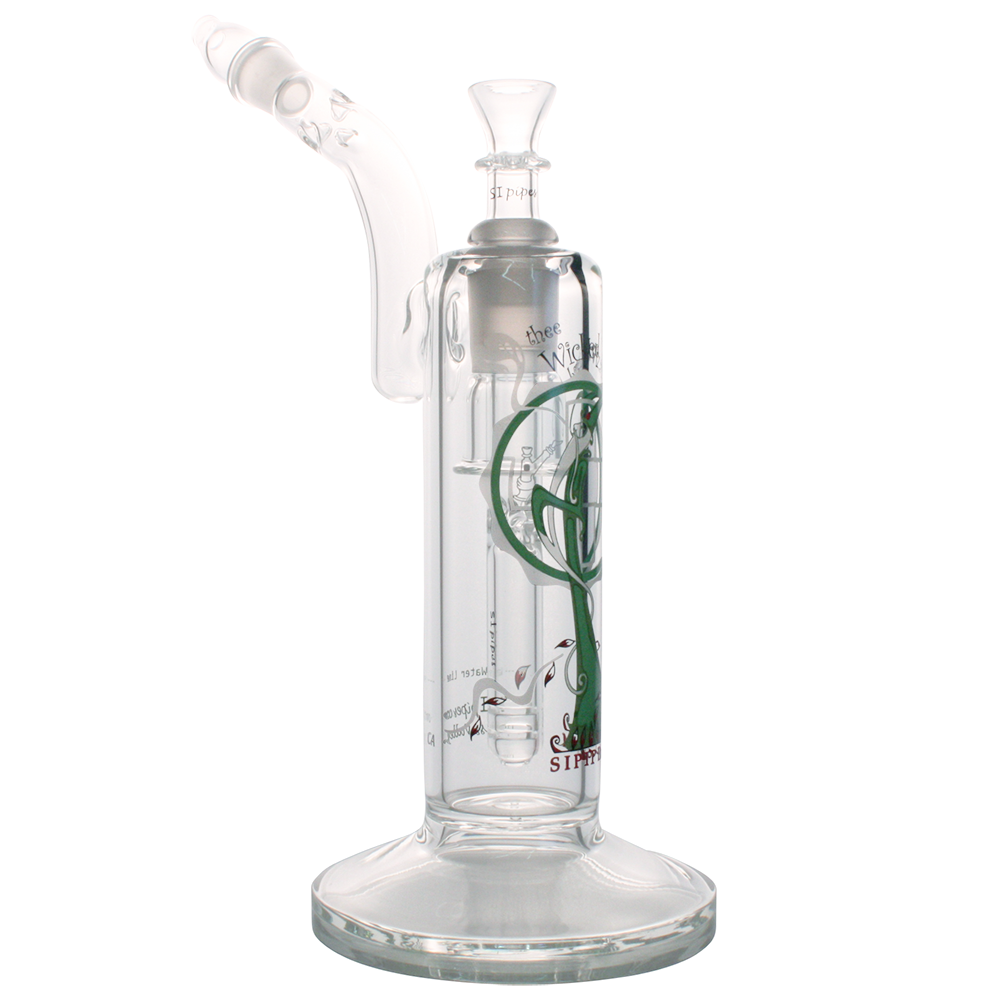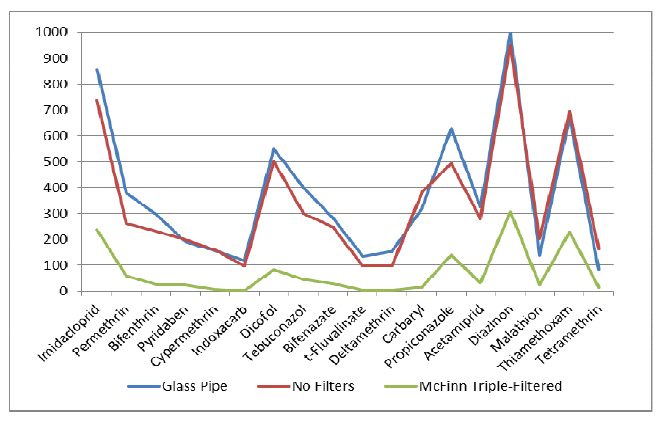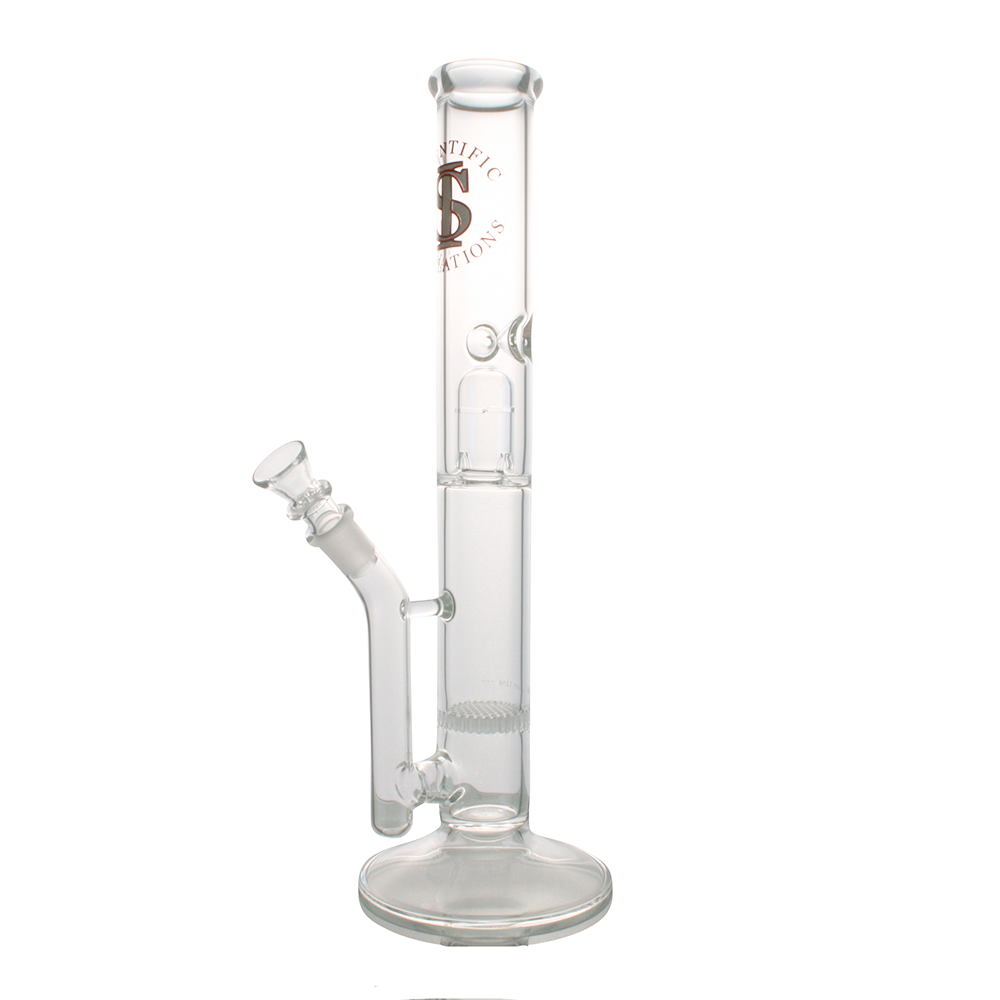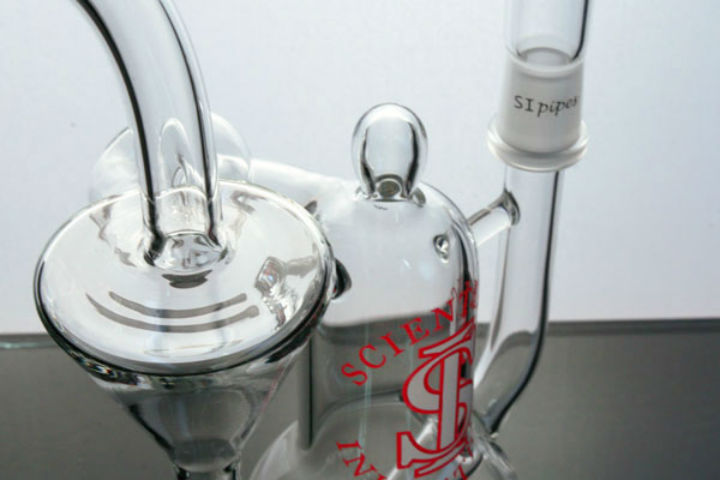
The latest addition to my glass collection showed up in the mail last Thursday, courtesy of my new friends at Scientific Inhalations, aka, SI Pipes. They gifted me with “Thee Wicked Wizard,” a sturdy, American made, mid-sized bubbler with a top-loading glass-on-glass bowl and downstem and removable, glass-on-glass mouthpiece. A slender, Burton-esque green Wizard adorned the side, and though the name suggested a certain fiendishness of character, I saw more of Gandalf than Saruman within the fire-wrought rendering.
At a glimpse, there was nothing particularly special about this pipe that entreated me to view it as necessarily superior to any others. I’ve seen this style before, more times than I could begin to count. Anymore, it seems like there’s a new glass company born every day, the majority functioning more as Xerox machines for pre-existing designs than purveyors of forward-thinking functionality or artistic expression. Not to say “Thee Wicked Wizard” isn’t a quality device. On the contrary, my new bubbler is a testament to flawless precision in execution. The welds are perfect and the design boasts a subtle superiority that is both elegant and clean. However, what sets this piece apart, along with the majority of the Scientific Inhalations line, isn’t something that can be pinpointed by a mere analysis of the glass. A good hint, though, is the pair of plastic tube containers that come with the piece, one containing organic cotton and the other filled with pellets of virgin coconut carbon.

Spoiler alert: the cotton and carbon, as you may have guessed, are the necessary materials for Scientific Inhalations meticulously conceived “triple filtration” system, designed to dramatically cut down on the unwanted toxins that accompany the combustion of your favorite sticky sweet herb. Here’s how it works (at least, how the piece I received works):
First, the smoke passes from the bowl through the downstem, the top half of which is filled with the carbon pellets. As anyone with half a brain and a rudimentary understanding of science knows, carbon of this type is one of the most effective ways to remove unwanted toxins from just about anything. Just ask the geniuses who invented the Brita water filter. Next, the smoke finishes the journey through the percolated downstem and passes through some good ol’fashioned H2O. Finally, there’s the cotton chamber just beneath the mouthpiece, providing that third tier of filtration and giving our lungs a much-needed respite from the daily abuse our that love for cannabis so often encourages.
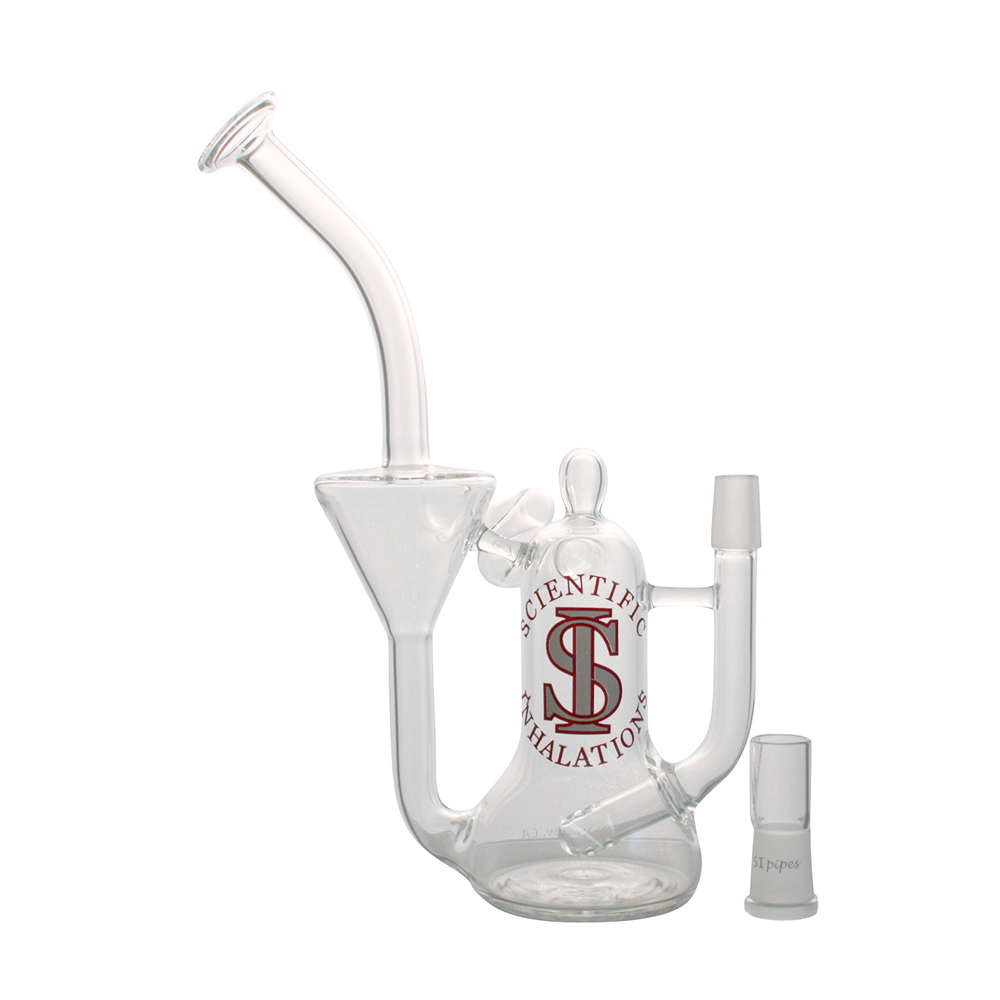
It’s not a gimmick either, as it often is with the majority of glass pipe companies out there who cleverly weave derivatives of words like “scientific,” and “medical” into their branding. It’s a legitimately new way to inhale, possibly the safest way to smoke, as proven by a study completed by an independent laboratory and then scrutinized by California’s Medical Board. It was no easy feat, as Victor, the company’s owner and founder was ready to point out, but as they say, the proof is in the pudding.
“They had to duplicate the test,” he recalled, “because when we turned it into the medical board, they had to know what atmospheric pressure was for the day, the temperature in the room, stuff like that. So we had to redo the whole test with more parameters . . . then the Journal of Toxicology replicated the test and said it actually did what they said it did.”
For the full report, click the graph:
So what does this mean for the average user? Chris, Scientific Inhalations’ PR master, broke it down into its simplest form.
“Smoother hits, bigger rips.”
What else do you need?
For medical patients and the more health-conscious among us, however, this means a lot more than just smoother way to toke up, although that’s definitely appreciated. We’re talking about a massive reduction not only in the standard carcinogens associated with the typical smoking experience, but also in the residues left behind from pesticides used for cultivation. One of the overlooked ironies of our culture is that while so many of us demand organically grown produce from the local grocery store, we never even think to ask for the same from our medicine. The fact that it’s green and not being created by chemists in labs and pushed through the mainstream pharmaceutical industry is somehow enough. Well, pesticides are pesticides, whether they’re lingering on the waxy surface of a store bought apple or tainting the trichomes of your stash. Either way, you’re being exposed to chemical agents, many of which have been linked to multiple ailments, cancer being the foremost among them. And unlike that of carcinogens, the problem of pesticides can’t be solved with a vaporizer.
“Everyone says that vaporizing is the safest way to smoke,” Victor observed, “but of those seventeen chemicals we had tested, five of them will boil before your medicine vaporizes.” Ouch. Unless you're smoking organic cannabis, SI Pipes might be safer than a vaporizer.
SI Pipes, though the latest incarnation of his life’s work, is by no way Victor’s first foray into the glass business. It just happens to be the first time he’s made smoking devices. A tradesman in the glass world since 1972, Victor has done it all leading up to this, first in lab glass, then high intensity lighting, and finally in medical glassblowing (conventional; not cannabis). He knows his boro. But never has he found such satisfaction as when he combined his forty years of experience producing glass with his lifelong passion for natural medicine, something which he understated to me with a genuine humility based in the stoicism of his generation. “We just wanted to make a scientific pipe that was a better way to smoke.”
From the first hit, it was abundantly clear that my so called “Wicked Wizard” was indeed, that better way to smoke. As the sweet, skunky wisps crawled down my tired throat, I found myself amazed at the ease with which I inhaled. There was no burning sensation, no itchy tingle at the base of my chest, no coughing fit that left my head dizzy with oxygen deprivation. There was only the serenity that comes with the ingestion of nature’s greatest remedy. With every hit, I pulled harder, being sure to fill the chamber to the point of overflowing before I breathed it in, but with every hit, I felt nothing more than warm silk on my windpipe. The flower that had been so intricately woven into my life for so long had become my rose without a thorn. Thanks, Scientific Inhalations.
